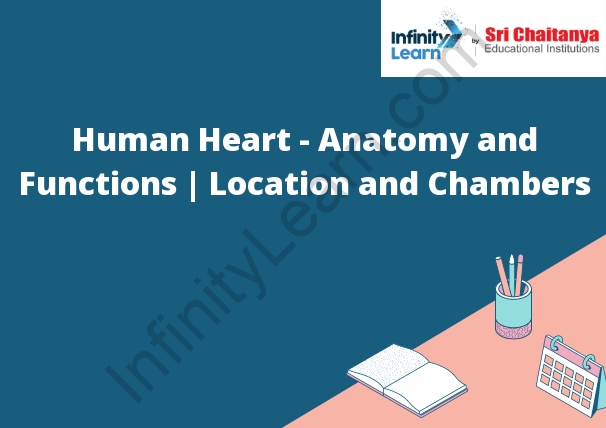Table of Contents
Anatomy and Functions of the Human Heart
The human heart is a muscular organ that pumps blood throughout the body. The heart is located in the chest between the lungs. The heart is divided into four chambers: the left atrium, the left ventricle, the right atrium, and the right ventricle. The heart has four valves that open and close to direct the flow of blood. The valves are the mitral valve, the tricuspid valve, the pulmonary valve, and the aortic valve. The heart is powered by the myocardium, the muscle of the heart. The myocardium is composed of cardiac muscle cells, or cardiomyocytes. Cardiomyocytes are innervated by the autonomic nervous system, which controls the heart rate.

Location of the Heart
The heart is located in the thoracic cavity, slightly to the left of the midline. It is enclosed in a sac called the pericardium. The heart is about the size of a clenched fist and is cone-shaped. The base of the cone is at the bottom and points to the left side of the body. The apex of the cone is at the top and points to the right side of the body. The heart has four chambers-two atria and two ventricles. The atria are the upper chambers and the ventricles are the lower chambers. The right atrium receives blood from the body and the left atrium receives blood from the lungs. The right ventricle pumps blood to the lungs and the left ventricle pumps blood to the body. The heart has a network of blood vessels called the coronary arteries that supply it with blood.
Types of Circulation
The circulatory system is responsible for circulating blood throughout the body. There are three types of circulation:
1. Pulmonary circulation: This is the circulation of blood between the heart and lungs. The blood is oxygenated in the lungs and then travels to the heart, where it is pumped out to the rest of the body.
2. Systemic circulation: This is the circulation of blood between the heart and all other parts of the body. The blood delivers oxygen and nutrients to the tissues and removes waste products.
3. Coronary circulation: This is the circulation of blood through the heart muscle. The blood delivers oxygen and nutrients to the heart muscle and removes waste products.
Layers of the Heart Wall
The heart wall is made up of three layers: the epicardium, the myocardium, and the endocardium.
The epicardium is the outer layer of the heart wall. It is a thin, delicate layer of cells that covers the outside of the heart.
The myocardium is the middle layer of the heart wall. It is a thick layer of muscle tissue that makes up the bulk of the heart wall.
The endocardium is the inner layer of the heart wall. It is a thin layer of cells that lines the inside of the heart.
Chambers of the Heart
There are four chambers in the heart- two atria and two ventricles. The atria are the small, upper chambers and the ventricles are the larger, lower chambers. The right atrium receives blood from the body and the left atrium receives blood from the lungs. The right ventricle pumps blood to the lungs and the left ventricle pumps blood to the rest of the body.
Right Atrium
The right atrium is a chamber in the heart that collects blood from the veins that return blood to the heart from the body. The right atrium contracts to pump the blood into the right ventricle, which then pumps the blood out of the heart and into the lungs.
Left Atrium
The left atrium is a chamber in the heart that receives oxygen-poor blood from the left ventricle and pumps it to the lungs. The left atrium is also responsible for receiving oxygen-rich blood from the lungs and pumping it to the left ventricle. The left atrium is located on the left side of the heart.
Right Ventricle
The right ventricle is the lower chamber of the right side of the heart. It pumps blood to the lungs.
Left Ventricle
The left ventricle is a muscular chamber in the heart that pumps blood out of the left side of the heart and into the aorta.
Cardiac Conduction Pathway
The cardiac conduction pathway is the system of specialized cells in the heart that control the rhythm of the heartbeat. The pathway begins in the sinoatrial (SA) node, a small, specialized cluster of cells in the upper right chamber of the heart. The SA node is responsible for generating the electrical impulse that initiates each heartbeat.
The electrical impulse travels from the SA node down through the atria, the two upper chambers of the heart. The atria are responsible for pumping blood from the body into the ventricles, the two lower chambers of the heart.
The electrical impulse then travels down through the ventricles, where it triggers the muscles in the heart to contract and pump blood out of the heart and to the rest of the body.
The conduction pathway is regulated by a number of different factors, including the autonomic nervous system, the hormones epinephrine and norepinephrine, and the electrical properties of the heart muscle cells.
Heart Rate
Your heart rate is a measure of how many times your heart beats per minute. Your heart rate can be affected by many things, including age, sex, physical activity, and stress.
Normal resting heart rates vary based on a person’s age. For example, a newborn’s heart rate may be around 100 beats per minute, while a healthy adult’s heart rate may be around 60-80 beats per minute.
A high heart rate, or tachycardia, can be a sign of a heart attack, an arrhythmia, or another heart problem. A low heart rate, or bradycardia, can be a sign of a heart attack, an arrhythmia, or another heart problem.









